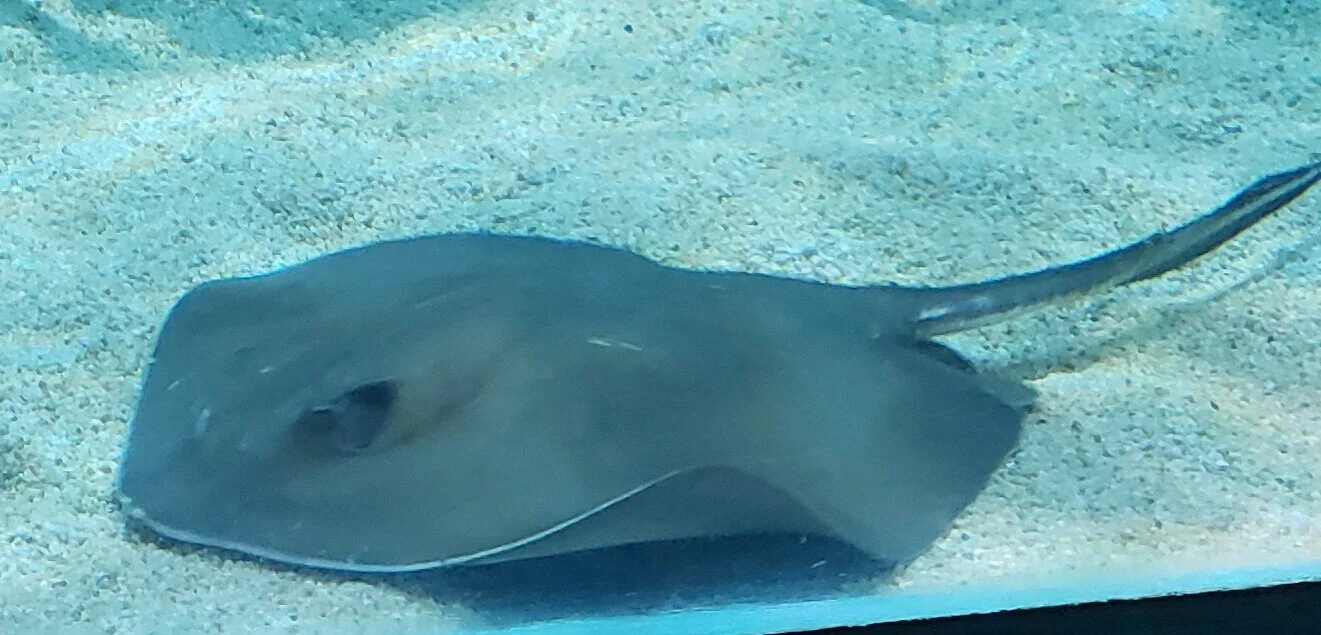What does your home sound like? Is it quiet? Loud? Are there kids playing or dogs barking? Do you hear trains or traffic in the background?
If you think about it, our homes have a certain sound. Are you having a hard time figuring out what that sound is? Think about the last time you went away and had a hard time falling asleep because you missed the sounds of home.
Just like our homes and habitats have a certain sound, so to do ocean ecosystems. (Check out my video of Aquarium of the Pacific, Pacific Visions sounds on the reef exhibit to hear what a reef sounds like) Now though, with increasing amounts of anthropogenic influences, aquatic habitats don’t sound the same and animals like Clownfish and whales, who use sound to navigate are having issues.
While noise pollution might not seem like that big of a deal, it has had increasingly larger impacts on marine life. As anthropogenic noises (air guns, seismic testing, oil drilling platforms, cargo ships, speed boats, pile drivers, etc.) increase, the animals living in the oceans are facing more and more problems.
Consider the last time you were somewhere and you encountered a loud or unpleasant noise. What did you do? Most likely you left the area, which is what some of the larger species like whales and dolphins will do. Animals will often change their course to avoid loud areas like shipping lanes. But what about those smaller sessile species who can’t get away? They have been found to slowly migrate, leaving their native areas all together. Another example of issues it causes is one experienced by Clownfish. In their larval state they live in open water and as they grow they use sounds to help them navigate back to the reefs they will live on. With all the noise pollution, they are unable to tell which direction they need to swim to get to their reef.
A recently released literature review looked at different studies done around the world with respect to aquatic species and noise pollution. The study’s authors looked at more than 10,000 papers about marine bio-acoustics from the past 20 years with the goal of compiling information that can be used to create policies that will bring about change.
Researchers point out that noise pollution can cause physical damage to the animals. Some fish can regenerate cells used for auditory purposes, but mammals likely don’t have that ability.
So, what can be done? While international cargo shipping, and oil drilling is not going to stop, there are changes that can be made to mitigate our impacts on the watery world and its inhabitants.
By moving shipping lanes, we can locate them in areas that have as small of an impact as possible.
Reducing the speed of traveling vessels will help to reduce noise pollution they cause.
Changing the types of propellers used to ones that produce fewer cavitation bubbles will quiet them.
Creating areas with sound barriers for oil platforms and deep sea drilling can reduce the impacted areas.
One of the unique, yet unplanned facets of this review is that the authors got to see the results of reduced noise pollution due to the pandemic slowdowns in commercial shipping. Dr. Carlos Duarte, the paper’s lead author said “Recovery can be almost immediate” as marine mammals and sharks began to return to areas when the shipping traffic slowed during 2020.
In the example at the beginning, when considering out home ecosystems, it should be noted that they are not quite, and nor are the oceans. Fish, marine mammals, and other organisms use sound to communicate with croaks, pops, snaps, and songs. Waves crash, rocks tumble, and water splashes. The goal of this research is not to show us that we need to eliminate the noise we add to the oceans, but to work to make sure that our actions do not take away from the natural sounds of ocean habitats.
To read the full article search for:
“The Soundscape of the Anthropocene Ocean”. Carlos Duarte et al.
Science 05 February 2021 ,Vol 371 Issue 6529





